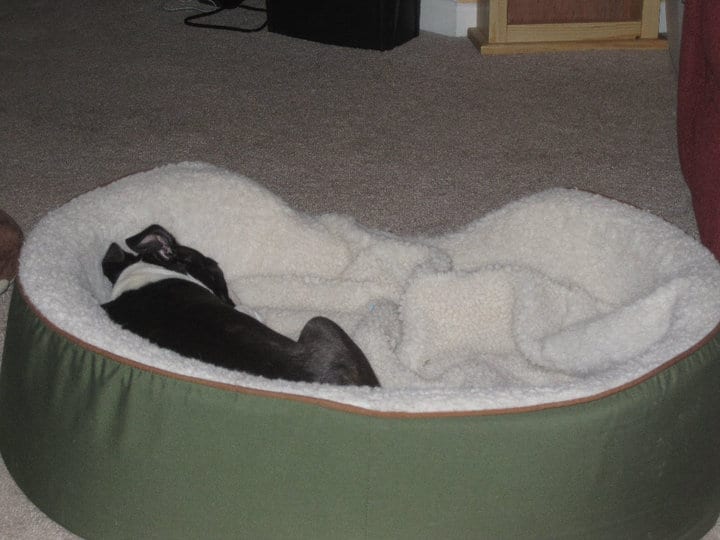The Boston Terrier is an intelligent and lively breed which makes an excellent companion and family member. However, this breed can be stubborn and independently-minded, making him more of a challenge to train than some other canines.
That’s where crate training your Boston Terrier can significantly level the playing field in building a positive relationship between you and your dog.

Whether you are purchasing a puppy or adopting an older dog from a rescue organization, crate training is key to giving your dog a place of his own while giving you peace of mind. Crate training encourages your dog’s natural denning instinct while still allowing him to be part of the family “pack.”
Full Disclosure: Emily and I stopped crating Bella around three years ago. Bella now has a bed she sleeps in, and we allow her to walk around upstairs when we are away. But we did do crate training in the beginning.
What are the Benefits of Crate Training Your Boston Terrier?
A crate is beneficial to your Boston Terrier because it allows her to rely on her instincts and have a comfortable spot in your household that the dog can call her own. In the wilderness, wild canines and wolves use dens as places of security; your dog has that instinct, too. Crate training provides your dog with the ultimate kind of safety and care by giving her a secure space to go if she is stressed, unwell, or needs some time to herself.
Key Steps to Crate Training
Crate training is all about proper space and positive associations. You want to provide your dog with her own place, but without separating her from the family, she loves to be around. Follow these steps to create a crate that your Boston Terrier can enjoy healthily.
1. Choose the right sized crate.
To encourage your dog’s view of a crate as a den, she needs the right sized space. Too small a crate will make her feel trapped and prevent her ability to move comfortably. A crate that is too large may make your dog feel lonely and uncomfortable. The crate should be big enough to allow her to stand up, lie down, and turn around. It should not be so large that she treats it as her bathroom space.
2. Make the crate a comfortable, welcoming environment.
You can help your dog see the crate as a welcoming location by making it appealing to her. Start by placing the crate in an area frequented by you and your family. That way your Boston Terrier will not feel separated or left out from her favorite company.
Next, include the following items to make the crate a cozy home away from home:
- A blanket to cover the top and sides of the crate to create a dark “den”
- Bedding or a comfortable blanket in the bottom of the crate
- Safe chewy or squeaky toys
- An old t-shirt with your smell on it
- Food puzzle toys
- Any other item your dog loves and can safely have while unattended
3. Use treats to lure your Boston Terrier into the crate.
If your Boston Terrier is reluctant to enter the crate voluntarily, use treats to lure her into it. Place some pieces of kibble or some high-quality treats (treats she does not get for anything else) in front of both sides of the crate door. As she gains confidence in entering the crate, move the treats back further, step by step. Initially, leave the crate door open, so she doesn’t view the crate as a trap.
As your dog begins to enter the crate more willingly, add a verbal command such as “Kennel” to this action. When she enters the crate, immediately praise her and give her a treat.
4. Condition your dog to the crate for more extended periods.
Patience and consistency are critically important in making crate training a success. Work with your Boston Terrier on her timeline and slowly build up the amount of time you keep her in the crate. A good rule of thumb for puppies and adult dogs who are being housetrained is no more than three to four hours in the crate at a time.
Your dog should not spend the majority of her day in a crate as she can develop separation anxiety and depression. Only keep your Boston Terrier in her crate until you can trust her around the house. After that, he should enter the crate voluntarily.
Crate Training is in Your Boston Terrier’s Best Interests
Crate training is critically important to your Boston Terrier’s well-being. Not only does crate training evoke her natural denning instinct and assist with the housetraining process, but it supports her emotional health. For the dog’s safety, proper socialization, and mindset, a crate gives your dog a place of her own, allowing her to be a happy, healthy dog — and giving yourself peace of mind as well.
